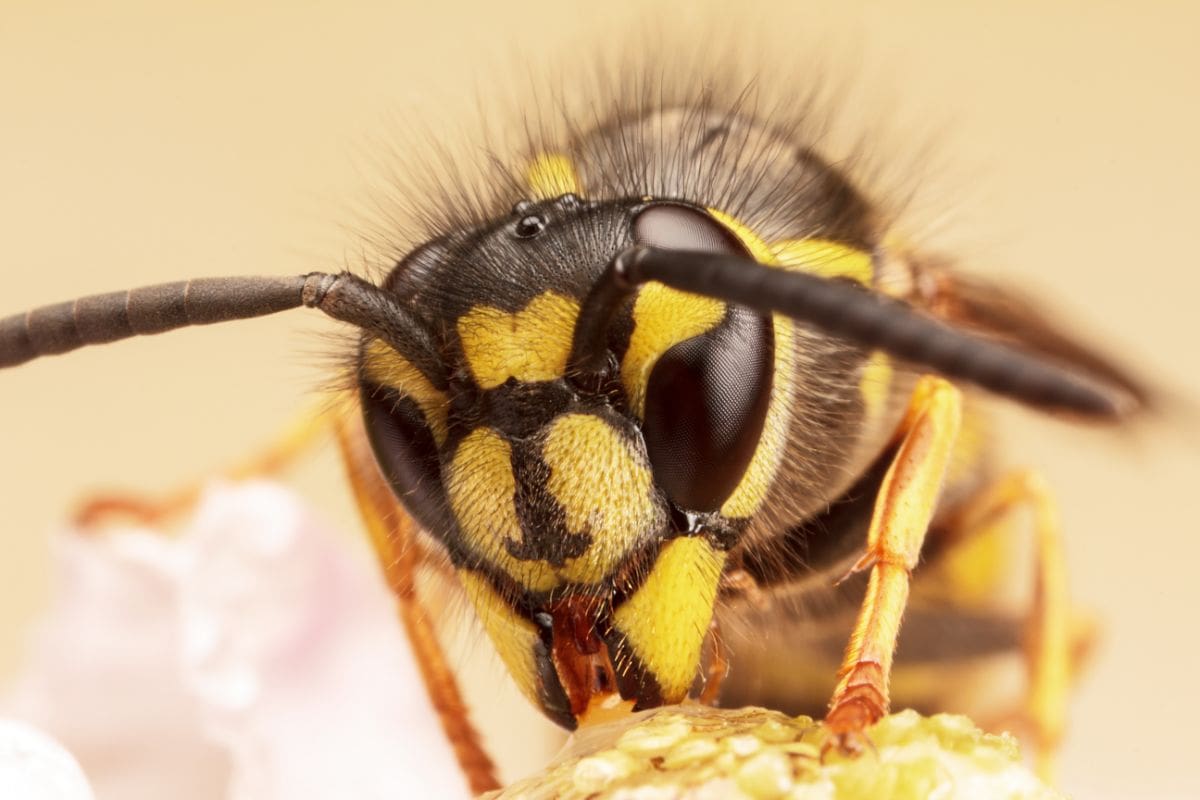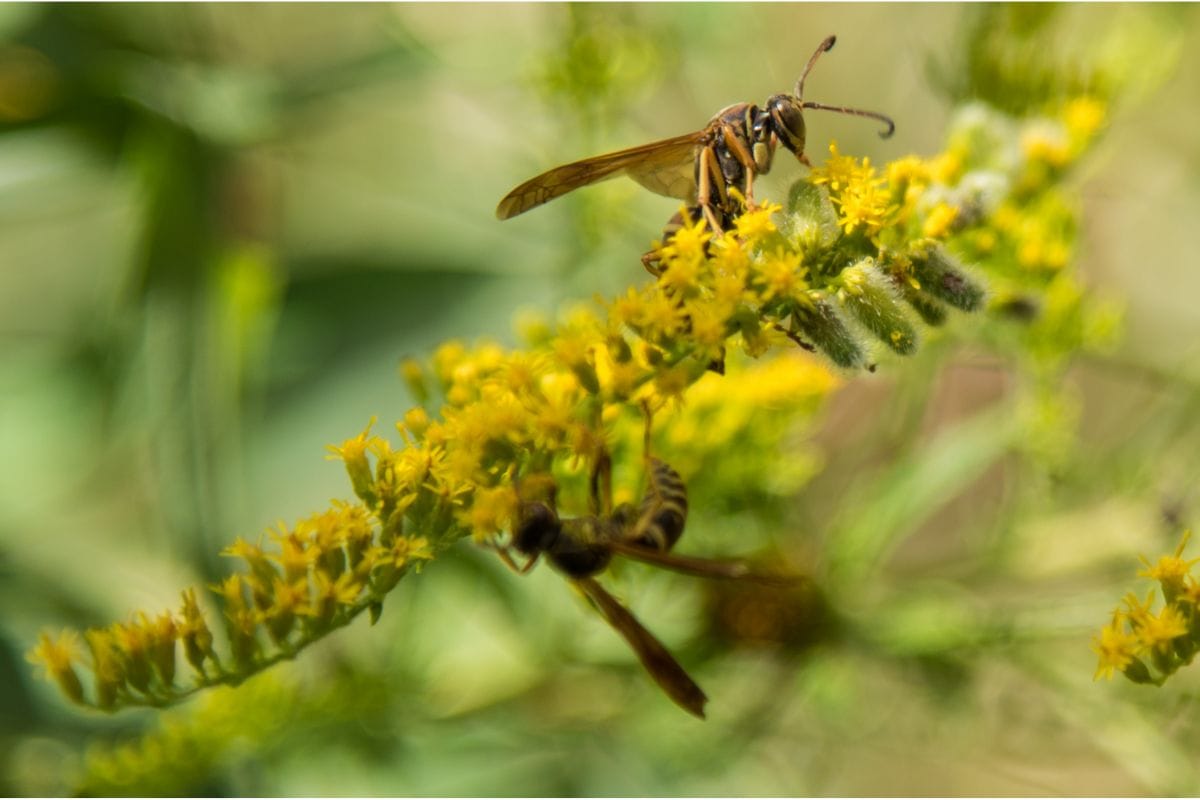Most people think of insects as pests, however, there are plenty of insects that are not pests and are not harmful either. Some insects help to control the pest populations, instead of helping them.

One of these insects is wasps, they help to maintain the environment, being a massive benefit to their local ecosystems, and that of others due to the other insects which they capture.
One of the more common types of wasp, the Yellowjacket, helps maintain gardens, backyards, and many other environments.
One of the reasons that Yellow Jackets are so helpful is down to their diet, and what they eat.
So, what do they eat, and why is this so useful?
What We Know About Yellowjackets
Before we get into their diets, let’s learn a bit more about Yellowjacket wasps themselves.
There are a plethora of species of these wasps in the U.S. which belong to the Vespidae taxonomic family. Their queens can lay well over 25,000 eggs in just one season, and nests can hold 5,000 wasps at any time.
A first generation of Yellowjacket wasps is responsible for caring for and feeding their queen as her progeny.
They do help pollination, however, they are not very fluffy, like honey bees or bumble bees. Instead of being attracted to flowers, they are gardeners’ best friends thanks to how they eat.
What Do The Yellow Jackets Eat?
When a Yellowjacket wasp is fully grown their diet is mainly made up of carbohydrates and sugars. Yet, these wasps are not unknown to eat meat, insects, or even fish!
They find their sugars and carbohydrates in these food types:
- Foods rich in sugar,
- Fruits.
- Fruit juices.
- Flower.
- Nectar.
- Tree Sap.
To collect the sugar from these foods, they have long tongues which they stick into the food source.
Alternatively, the larvae of these wasps feed on proteins that are found in:
- Caterpillars.
- Fish.
- Insects such as aphids, crickets, and flies.
- Meat.
- Moths.
- Spiders.
During the stage where these wasps are larvae, they need a lot of protein. Therefore, the adults will hunt other insects and then bring them back to their colony for the young to feed on.
The insects will be chewed up and conditioned in preparation for the larvae to eat them.
This is a primary way in which gardeners benefit from the presence of Yellowjacket wasps.
Insects: A Yellow Jacket Diet
Aphids, beetle grubs, cabbage worms, crickets, flies, and a majority of crop-damaging bugs are all food for these wasps.
They also eat spiders as well, which is a bit counterproductive since spiders tend to prey on pest insects as well, although some can be dangerous.
As well as caterpillars, these wasps are also known to eat moths as well. They are not strictly butterfly killers just because they eat caterpillars either.
You see, Yellowjacket wasps will also eat bugs that have already died. While this might not seem super important it is. Consider that these wasps keep your garden and yard free of dead bugs!
In a 2,000 square foot space, it is believed that Yellowjacket wasps will eat over 2 lbs of bugs either alive or dead!
How Do Yellow Jackets Feed Their Offspring
So, since it is the young of Yellowjackets which consume the majority of pest insects, and it is their elders who bring them these insects, how do they feed their young exactly?

Well, the larvae will give a signal to female Yellowjacket workers that they are hungry.
The female will then leave the nest to look for food, she will capture the prey, some bug, or insect, and return to the nest once she has a suitable source of food.
She has powerful jaws which she will use to chew up the prey and slice it up into more manageable pieces for the larvae, so it is mushed up into a paste-like substance.
This way, the larvae, who are immobile, will be able to eat their food with more ease.
Once this is done, the female will tickle the larvae, which triggers them to secrete a liquid through its salivary glands, and once they start to produce a sugary liquid, the female worker will feed on it, and as she does, she transfers the paste to the larvae using their glands.
This is a unique process and an exchange of food between adults and larvae. This is a process known as trophallaxis.
What Is A Yellow Jackets Diet Like In The Late Summer & Fall
Some bugs hide away in colder seasons, so it is only reasonable to wonder if the Yellowjacket diet changes later in the year.
Yellowjacket wasps are social wasps, and therefore they prefer to eat insects and get their sugar supply via a colony process.
However, in late summer and early fall, normal supplies of food run low. Many insect sources die off at this time of year.
A major source of the conflict between Yellowjackets and humans is when the wasps seek out alternative food sources.
They will seek out any sugary substance, which can include cakes, candies, juices, and carbonated drinks. This is why you can sometimes find large amounts of Yellowjacket wasps swarming picnics or around dining establishments.
Overall – Yellowjacket Diets
Yellowjacket wasps are one of the most common wasps there are, and they help maintain balance in a variety of ecosystems thanks to their primarily insect-based diet.
A lot of insects that we view as pests are eaten by Yellowjackets.
However, it is usually Yellowjacket larvae that eat the insects, while the adults catch them. Bugs such as flies, moths, aphids, crickets, and many other annoying insects fall prey to these wasps.
Their diets help to maintain balance in their ecosystems, while also helping gardeners’ plants stay better protected from destruction by these pests. They are more helpful than we know!
- Do Bug Zappers Kill Bees? Completely Explained - April 9, 2024
- Does Brake Cleaner Kill Bees? Full Explanation - March 20, 2024
- Do Bald-Faced Hornets Kill Honey Bees? & How to Protect Them - March 4, 2024
